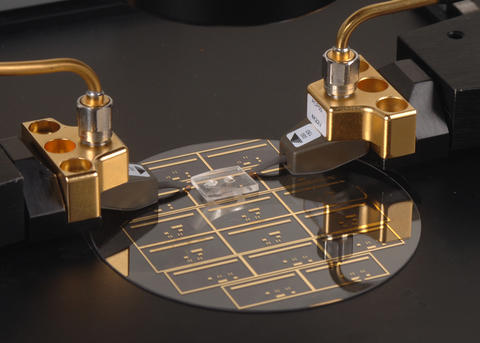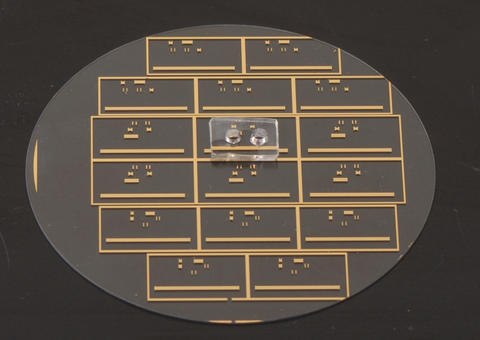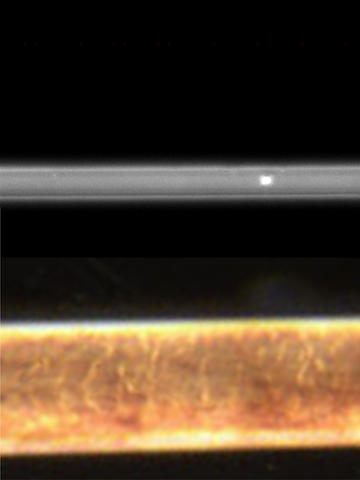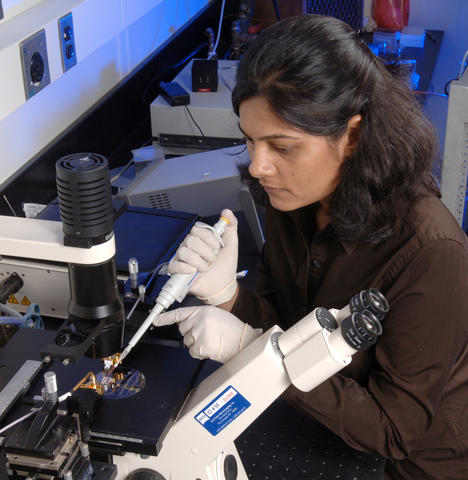
Photograph of the NIST micro microwave oven. The gold traces on the glass disk are microwave transmission lines. The 1.25 centimeter wide polymer block over one of the transmission lines houses a miniature chamber in which a pinhead-sized drop of fluid can be heated. The large devices on either side of the polymer block are microwave probes.
Researchers at the National Institute of Standards and Technology (NIST) and George Mason University have demonstrated what is probably the world's smallest microwave oven, a tiny mechanism that can heat a pinhead-sized drop of liquid inside a container slightly shorter than an ant and half as wide as a single hair. The micro microwave is intended for lab-on-a-chip devices that perform rapid, complex chemical analyses on tiny samples.
In a paper in the November 2007 Journal of Micromechanics and Microengineering, the research team led by NIST engineer Michael Gaitan describes for the first time how a tiny dielectric microwave heater can be successfully integrated with a microfluidic channel to control selectively and precisely the temperature of fluid volumes ranging from a few microliters (millionth of a liter) to sub-nanoliters (less than a billionth of a liter). Sample heating is an essential step in a wide range of analytic techniques that could be built into microfluidic devices, including the high-efficiency polymerase chain reaction (PCR) process that rapidly amplifies tiny samples of DNA for forensic work, and methods to break cells open to release their contents for study.
The team embedded a thin-film microwave transmission line between a glass substrate and a polymer block to create its micro microwave oven. A trapezoidal-shaped cut in the polymer block only 7 micrometers across at its narrowest—the diameter of a red blood cell—and nearly 4 millimeters long (approximately the length of an ant) serves as the chamber for the fluid to be heated.



Based on classical theory of how microwave energy is absorbed by fluids, the research team developed a model to explain how their minature oven would work. They predicted that electromagnetic fields localized in the gap would directly heat the fluid in a selected portion of the micro channel while leaving the surrounding area unaffected. Measurements of the microwaves produced by the system and their effect on the fluid temperature in the micro channel validated the model by showing that the increase in temperature of the fluid was predominantly due to the absorbed microwave power.
Once the new technology is more refined, the researchers hope to use it to design a microfluidic microwave heater that can cycle temperatures rapidly and efficiently for a host of applications.
The work is supported by the Office of Science and Technology at the Department of Justice's National Institute of Justice.
J.J. Shah, S.G. Sundaresan, J. Geist, D.R. Reyes, J.C. Booth, M.V. Rao and M. Gaitan. Microwave dielectric heating of fluids in an integrated microfluidic device. Journal of Micromechanics and Microengineering, 17: 2224-2230 (2007)

